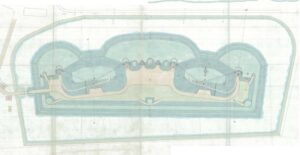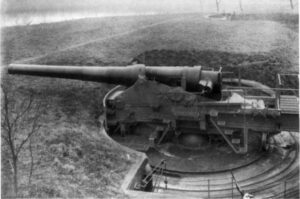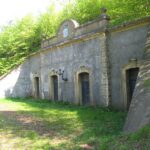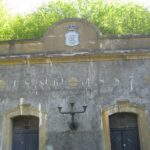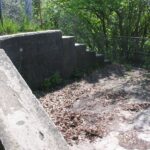This Battery was built 1886 -1887. It was originally referred to as the Kastrup Battery but is later, like several other coastal batteries, referred to a Fort.
The fort is included in the middle line of the coastal and naval defense.
The task of the fort was to secure the southern entrance to Copenhagen through the straits of the Kongedybet and the Hollænderdybet between the Saltholm and the Middelgrund.
The fort was an open works consisting of two large traverses with built-in casemates for storing ammunition. The walls and the ceiling consisted of 1.5 meters of concrete covered with approx. 30 meters of earth.
The armament was arranged on each side of the two large traverses with a smaller central traverse between
the two middle guns.
The middle traverse had no casemate building. There was no rooms for the crew, who had to live in tents on the area.
The supply of ammunition from the magazines to the guns took place on small wagons through 4 long tunnels, two from each magazine.
The fort is surrounded by a wet moat, 30-50 meters wide and approx. 3 meters depth.
A number of caponieres were placed in the moat.
The main armament consisted of 4 pcs. of 30.5 cm. guns. In addition, there were 3 pcs. of 15 cm guns, some older muzzle loaded guns and a number of machineguns for the close range defense.
During World War I the armament was expanded by 2 pcs. of 75 mm. and 2 pcs. of 47 mm. guns as well as additional machineguns as anti-aircraft weapons.
The two 47 mm. guns were possible balloon cannons, i.e. to air targets.
Additional the fort had a 90 cm. and a 150 cm. floodlight.
The fort was closed down in 1922, and the City of Copenhagen took over the fort in 1925.
The Germans was on the fort during the occupation 1940-1945 and it was used as a refugee camp after the war.
The City of Copenhagen owns and maintains the area today.
- The Fort Manager
- The gate
- Magazine
- Magazine
- Door to a Magazine
- Emplacement
- Emplacement
- Emplacement
- Emplacement
- Emplacement
- Tunnel for ammunition trolleys

